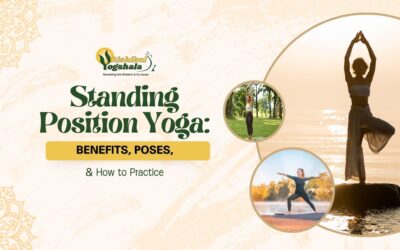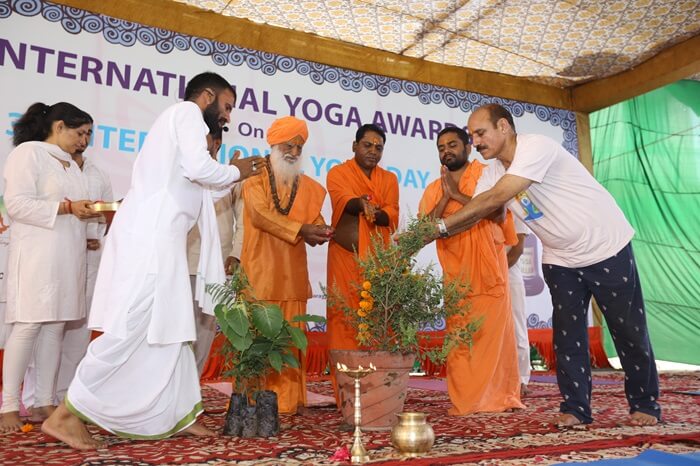The Essence of Yoga
Baddha Padmasana, or Locked Lotus Pose is a challenging seated yoga posture that requires agility, strength as well as balance. This is a modified version of the more traditional Padmasana Pose (Lotus Pose) that requires a more intense tightening of the legs.
Baddha Padmasana is an arduous but rewarding posture that combines physical agility and mental discipline. Similar to any asana that is advanced It is important to practice the pose with patience and consideration to your body’s limitations.

Yoga originated thousands of years ago with the intent to foster wellness and guide individuals on the path of enlightenment. Initially centered around physical training, yoga eventually evolves into a profound spiritual practice, helping practitioners connect with the universal consciousness.
Nature’s Influence
Nature plays a significant role in the practice of yoga. You might have noticed that many asanas are named after animals or plants, reflecting their characteristics. Yoga Asanas form the foundational base of the practice, and building strength in these poses is essential.
Seated Poses: An Introduction
The simplest way to begin practising yoga asanas is with seated poses, which are easy to perform and serve as a good starting point.
The Seated Pose
The seated asana with crossed legs and feet placed on the opposite thighs is known as the Lotus Pose. This Padmasana Yoga, which derives its name from the Sanskrit term for ‘lotus throne,’ is traditionally used in meditation, a practice that originated in ancient India.
Baddha Padmasana: The Enhanced Lotus Pose
An advanced version of the Lotus Pose is Baddha Padmasana, or the Locked Lotus Pose. This pose is known for its benefits to both the brain and spinal cord. The term “Baddha Padmasana” combines ‘Baddha’ (locked or closed), ‘Padma’ (lotus flower), and ‘Asana’ (pose or posture). The Baddha Padmasana helps maintain mental and physical stability and offers numerous benefits when practised correctly.

Top 7 Health Benefits of Baddha Padmasana
- Enhances Spine Agility: This posture benefits the spine by relieving sciatica, soothing back pain, and improving spinal alignment. It strengthens a weakened spine and corrects poor posture.
- Increases Mental Stability: Practicing this asana promotes mental and physical stability, calming the mind and enhancing mental peace. The pose increases blood flow to the brain and facilitates a flow of pranic currents, aiding in meditation.
- Strengthens the Legs: The pose strengthens and increases flexibility in the legs, hips, and back, making it beneficial for overall leg strength and flexibility.
- Improves Flexibility: The Locked Lotus Pose enhances overall body flexibility, which helps prevent injuries and eases daily activities.
- Good for Joints: This pose extends and engages various joints, including those in the shoulders, wrists, back, elbows, hips, knees, and lower legs, preventing joint problems and relieving muscle issues.
- Relieves Arthritis: The asana can benefit those with arthritis by relieving joint pain and easing body tension. However, consult a doctor or yoga practitioner if the condition is severe.
- Benefits the Stomach: The pose stimulates the digestive system, enhances metabolism, and massages the abdominal organs, promoting digestive health.
How to Practice the Locked Lotus Pose
Steps:
- Sit on the floor with your back straight and your body relaxed.
- Place your right leg on your left thigh and your left leg on your right thigh, forming a cross-legged Lotus Mudra.
- Move your hands backward to form crossed arms.
- Hold the thumb of your left foot with your right hand and the thumb of your right foot with your left hand.
- Ensure your spinal cord and head are aligned in the pose.
- Keep your eyes closed or open while breathing normally.
- Hold the position for 30 seconds or as long as comfortable, then slowly release and return to the starting position.
Precautions:
- This asana requires considerable endurance; master the classical Lotus Pose before attempting it.
- Pregnant and menstruating women should avoid this pose.
- Individuals with recent knee injuries, severe back or shoulder pain, or foot sprains should refrain from practicing this pose.
Yoga is a popular method for maintaining health, offering strength, sanity, and solace. By practicing the right asanas, you can lead a life of wellness.
Read More – Top 5 Health Benefits of Upward Lotus (Urdhva Padmasana)
Conclusion
Engaging in yoga, particularly advanced poses like Baddha Padmasana, offers numerous health benefits, from enhancing flexibility to providing mental stability. Whether you’re starting with basic 200 hour yoga teacher training or progressing to more intensive courses such as the 300 hour Yoga Teacher Training in India or 500 hour Yoga Teacher Training in India, integrating these practices into your routine can significantly enhance your physical and mental well-being. Explore our Ayurveda Retreat in India or Yoga Retreat in India to deepen your practice and experience the transformative power of yoga. Namaste!
















